ROY BURTON with some thoughts

The reason for the need to waterproof servos is that in this working model of the Turtle submersible, they could not go inside a waterproof compartment – there just isn’t enough room!
Enjoy more Model Boats Magazine reading in the monthly magazine.
Click here to subscribe & save.
This topic of conversation came up for discussion whilst I was chatting with some of the lads at Greenock Model Yacht and Power Boat Club. Some of the members who are yachtsmen had problems on occasion with damaged winches caused by pond water getting on to the circuit board, shorting the electronics and making the servo winch redundant, usually in the middle of the pond.
At this time I was building ‘The first submarine in the world’, Turtle of 1776, and this was relevant to me as I didn’t have enough room in the WTC (Water Tight Container) for the three motors, speed controllers and servos plus the ballast system and I thought I had an insurmountable problem.
So the question arose: ‘Would it be possible to have servos and motors regularly working whilst submerged ?’ Well the answer is ‘Yes’, but first of all I must point that if you decide to have a go, please remember that to modify any electronic unit could cause it damage and to proceed at your own risk. Also, any modifications to electronics may void your manufacturers warranty.
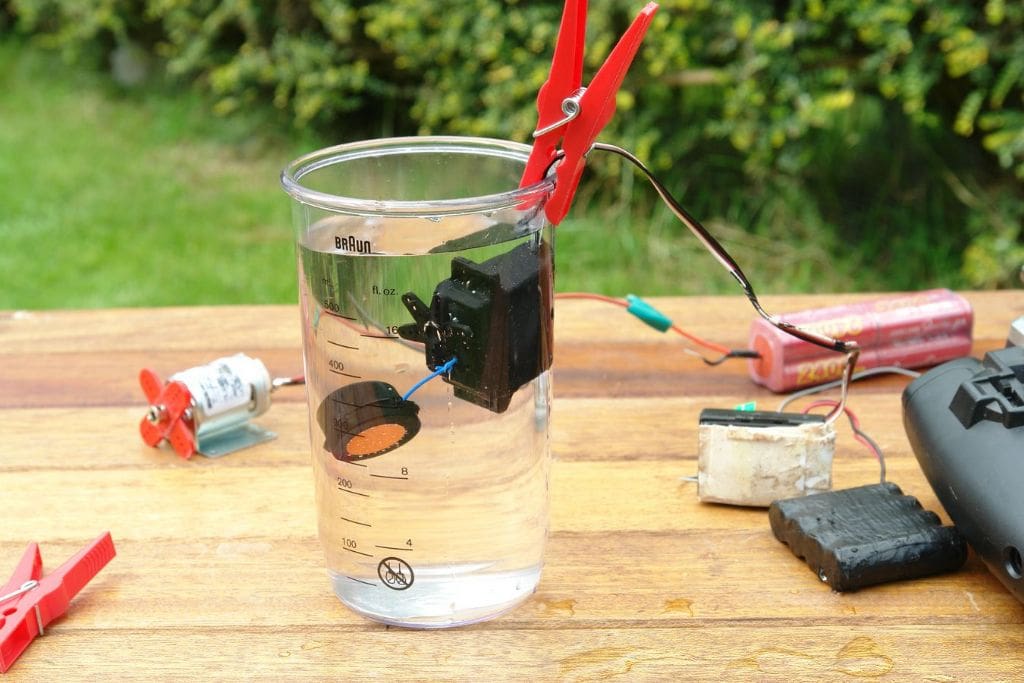
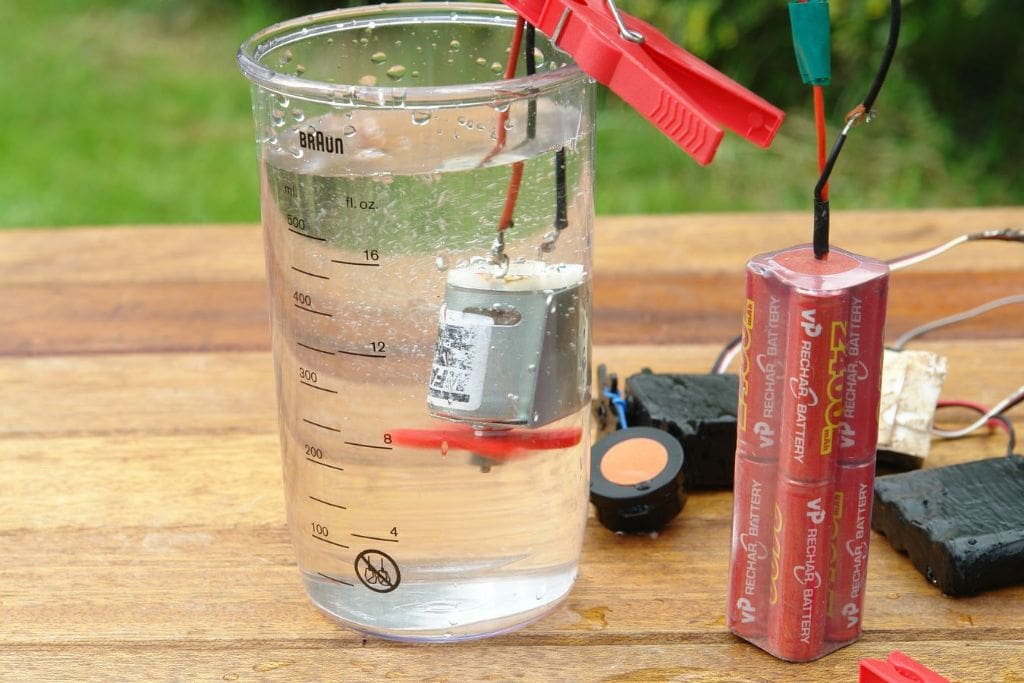
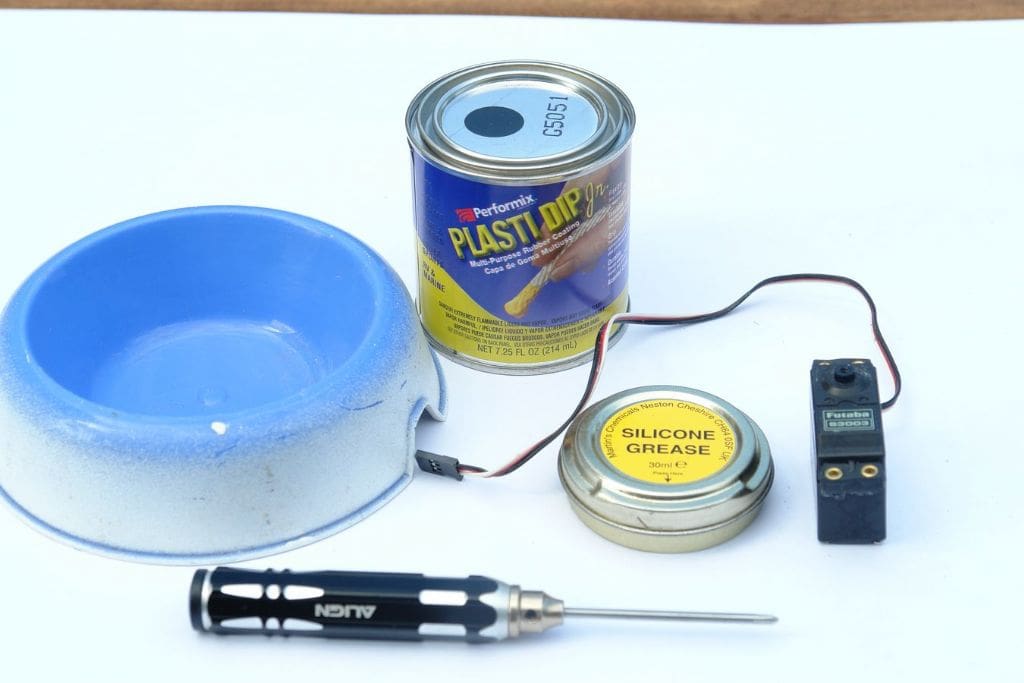
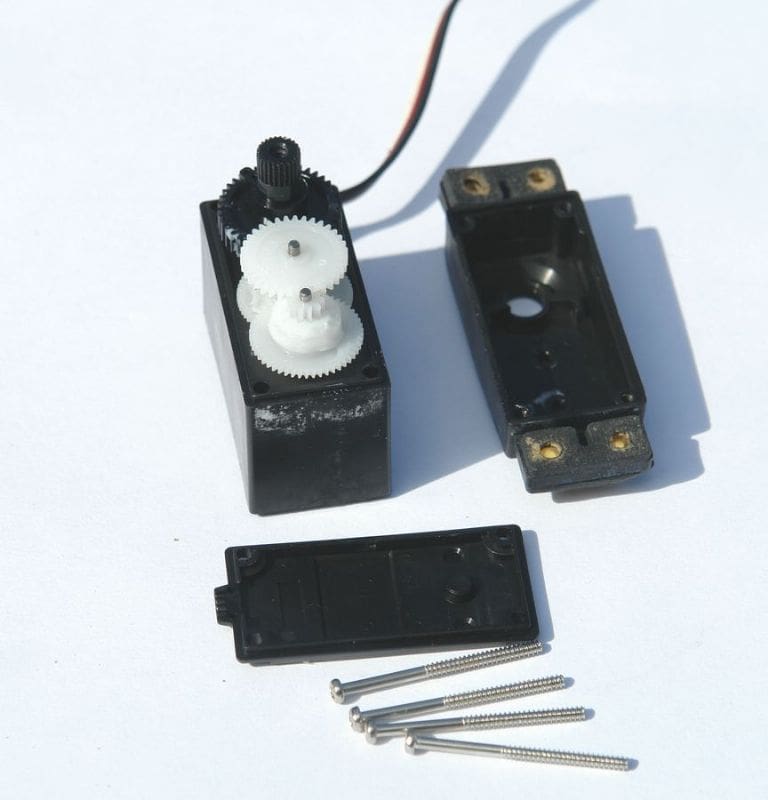
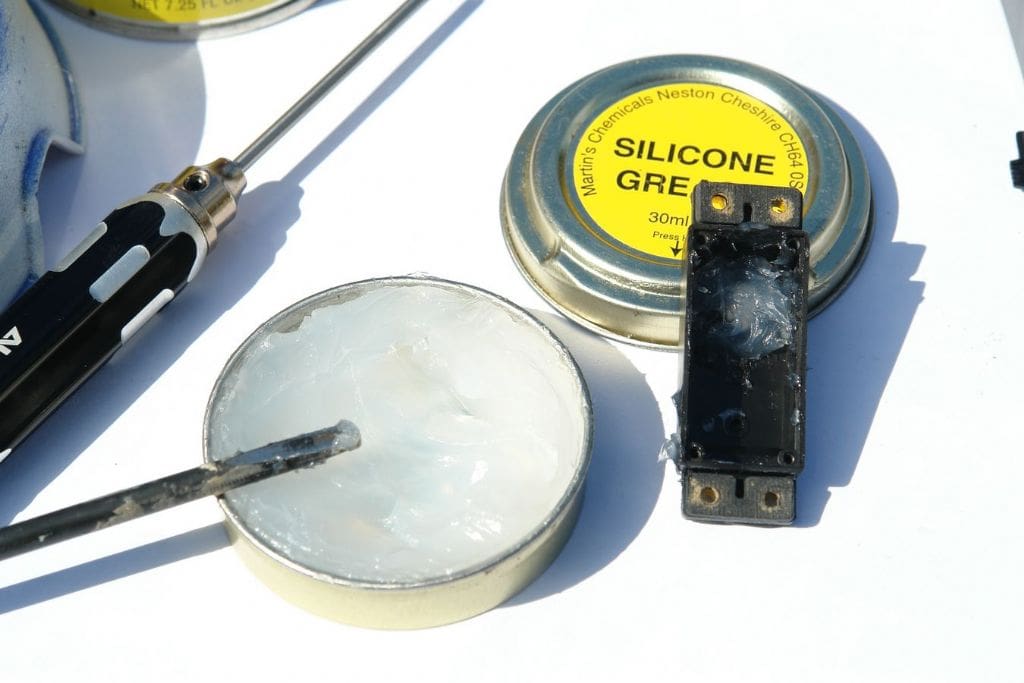
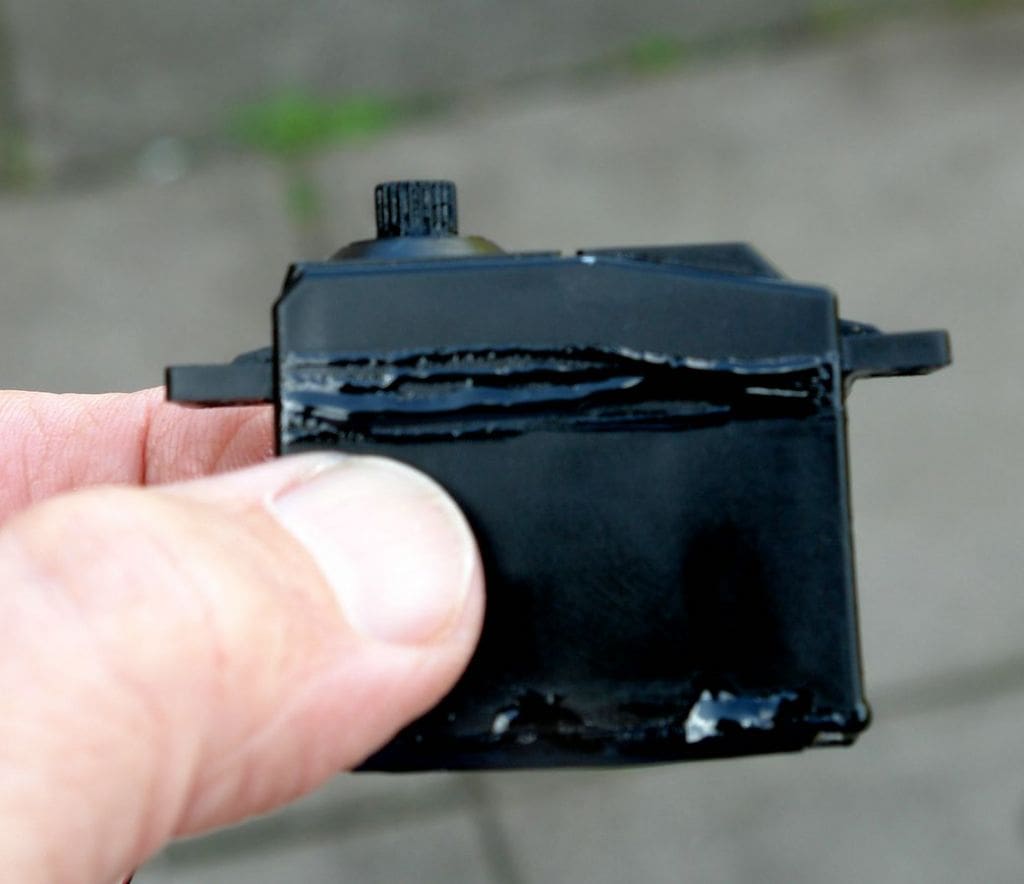
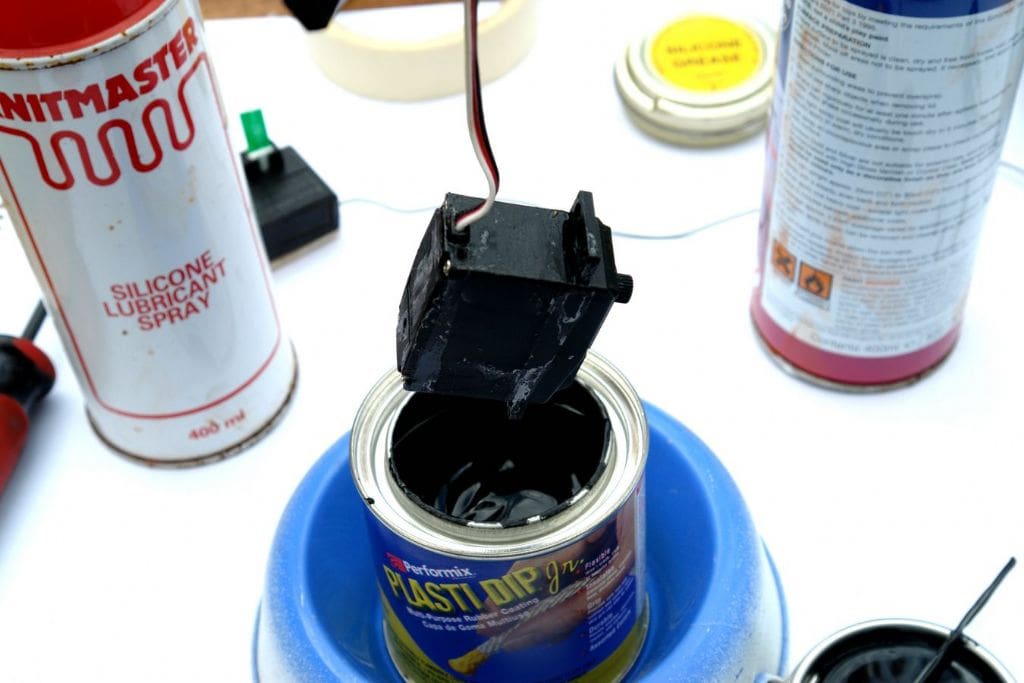
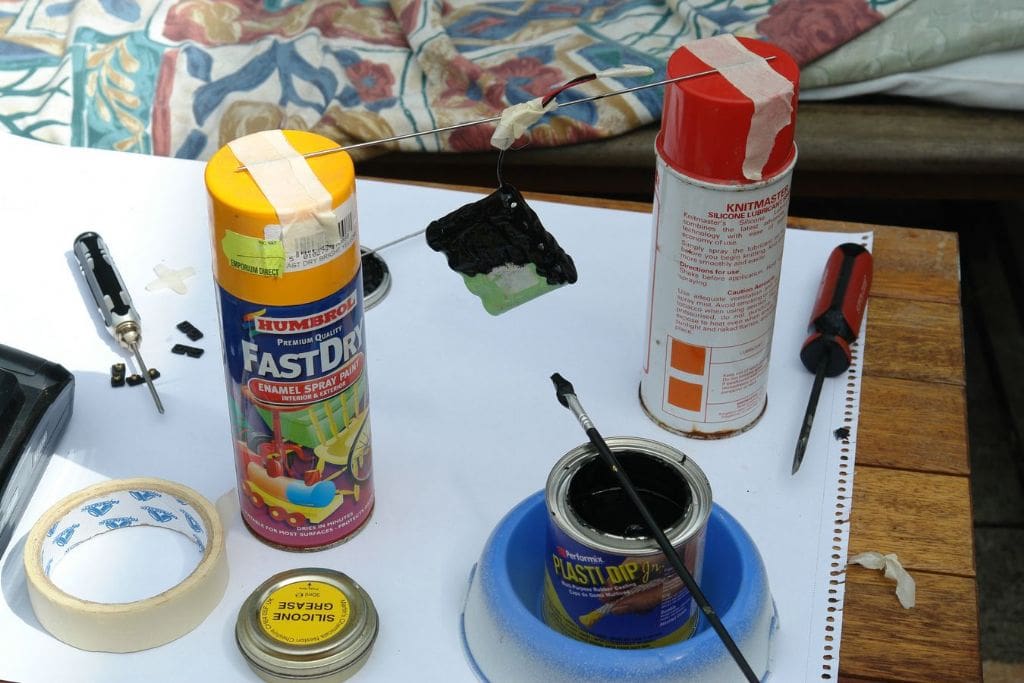
Waterproof servos
So called water resistance versions are available and suitable for all type of radio controlled models where exposure to water is a distinct possibility, but they are water resistant and not waterproof, so sustained emersion may mean that they fail.
Brushed motors
For small d.c. brushed motors, water in general is a bad conductor of electricity, the only real problem being dirt, fine particles and contaminates lurking in rivers and ponds which create conductivity thus causing damage and short circuits on the motor, resulting in them stopping working. We have all perhaps in our modelling experience seen a submerged motor continuing to work after emersion and indeed r/c receivers working again once dried out after an unexpected dip in the water.
Immersing a motor in distilled water with the motor running for 20 to 30 seconds will create a ‘wet stone’ effect on the commutator, smoothing out any sharp edges that may be on the brushes and this can also increase the speed of the motor by up to 20%. The motor will be quite happy to run whilst submerged, just requiring regular servicing to lightly oil the bearings and if being stored, then cleaned with distilled water, dried in an airing cupboard and lightly oiled. However if it is operated in dirty water, the long term outlook may not be so good. Please note that this is definitely a NO –NO for brushless motors (unless a reader knows differently?).
Waterproofing servos
These are the real problem, because any water on the internal electronics board stops the thing working virtually instantly.
Items required for waterproofing a standard servo are a screwdriver, small tin of silicone grease, small tin of Plasti Dip, bath sealant or similar, a small dish, a small artist’s paint brush and something on which to hang your servo to dry. Plasti Dip is a liquid plastic coating.
Proceed as follows: Assuming you are using a standard conventional servo, The first task is to unscrew the four screws on the base plate, remove the cover (if you wish) and you will see the small circuit board and the motor. There is nothing to do with these and the circuit board in particular, as our aim is to stop water getting anywhere near them.
Now gently, as you don’t want the gears displaced, take off the top plate (usually secured by the long screws) then turn it over and you will see a moulded indent where the horn sits. Just add a small amount of silicone grease here and if you have metal gears, grease them as well, but not too much.
Replace the top cover and base cover using a small amount of bath type sealant around the mating edges and insert the four screws and gently tighten. Do not over tighten as the plastic is usually very thin and will easily deform. If you wish, clean the casing with white spirit. Then, add a little superglue glue round the top and bottom seals and where the power lead enters the servo casing. Because superglue absorbs moisture, it’s better if you use a water based sealant around the mating edges of the top bottom and middle sections.
Then just paint with Plasti-Dip (or dip the whole servo). At least two coats are required, four hours apart, then leave to dry overnight, hung somewhere warm, and your servo is ready to use. It’s probably better to paint the Plasti Dip with a small artist’s brush, because this paint is very messy and can literally get everywhere.
Conclusion
So far, my treated standard servos have continued to work normally after several emersions. Plasti Dip is the main means of providing an all over waterproof coating to a servo casing. This substance can also be used to waterproof battery packs if you wish. It is a bit messy and inevitably using superglue on the case joints means that it will be difficult to strip down the servo later if required. Thanks to members of GMYPBC for their input to this article.
Useful contact information
Plasti Dip UK website: www.Plastidip.co.uk
You Tube: Use the search facility for DELTA1DSV or type:
www.youtube.com/watch?v=ppIE9UMRVF8 into your browser




